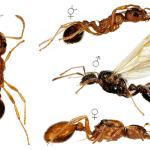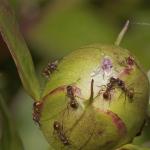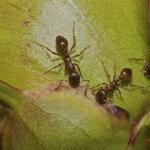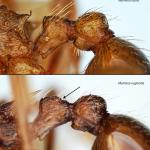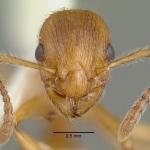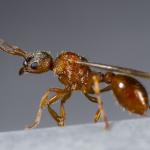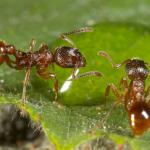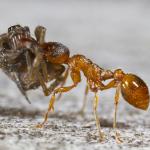Myrmica rubra is one of the common 'red' ants. Workers have antennal scapes that are long and slender with a gentle curve at the base. The area between the spines on the propodeum is smooth and shining and the spines are shorter than in other Myrmica. The petiole node has an indistinct dorsal area sloping smoothly down to its join with the postpetiole. Queens are similar to workers but larger. Male scapes are long and slender. The male tibia and tarsi have long projecting hairs.
Locally common in England and Wales with scattered records in Scotland and Ireland. It occurs in almost all of Europe and Palaearctic Asia.
Common. The species is not regarded as scarce or threatened.
Prefers sunny, warm, damp habitats such as meadows and river banks but found in most open urban and agricultural areas, woodland edges, parks and gardens. Rarely found in hot, dry, sparsely vegatated areas.
Nuptial flights usually occur during August and September.
Nests are in the ground, in tufts of grass, under stones and in rotten wood. Colonies are usually polygynous with an average of 15 queens and a thousand workers or more.
They feed on honeydew from aphids and scale insects and drink nectar from flowers. They are aggressive and sting freely.
2020


